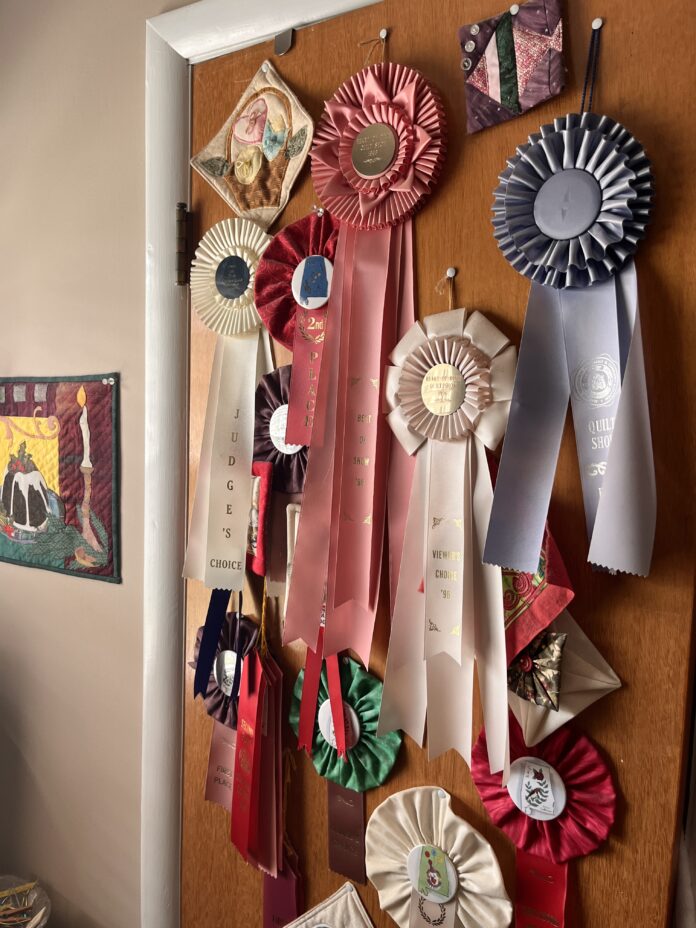
As a sewist and quilter with over 15 years of experience, I have been called several times to adopt another quilter’s “stash”. A stash in the quilter community is a collection of material, trims, patterns, findings, even equipment and furniture, collected over a sewing career. It is incredibly intimate to be invited into someone’s sewing space, even more so given that the circumstances are usually less than cheerful; arthritis will make once nimble fingers too knobby to navigate a needle, cancer will take away the stamina to sit and sew, and death takes away – well, all of it.
On Thursday afternoon I walked into the small back bedroom of a mid-century home in downtown Cullman. Lynsey’s grandmother had passed years ago and left behind a sizable collection of quilting supplies that was set for me to take over. Her grandfather, affectionately known as Poppy, sat on the porch and gave me a nod of approval. I think he was just happy to have the spare room back in order after a few years.
The humble room hosted paintings from the late 70s and framed photos of grandchildren in Peter Pan-style collars, with prize rosettes dotting the walls. There were dozens of rosettes, ribbons and certificates – possibly even hundreds if you count the ones stuffed into storage drawers throughout the studio. It was clear that Joy Nixon Flynn, or “Mimi” to her favorite littles, was an avid and very accomplished quilter. Not the hobby kind, like I consider myself most of the time. She meant business, and business must have been booming before she died.
Colorful batiks, earthy cottons, rosy florals and soft flannels sat in stacks throughout the room: in floor-to-ceiling shelving, in plastic storage totes, in dresser drawers, in the closet. Baskets of trims, threads in every tone and buttons littered the workspaces. I sorted through pre-cut bundles and bolts of batting, neatly folding the yardage she had carefully picked out over her years of collecting. Offcuts, selvage edges and batting scraps were tucked into baskets, surely to be of use for something. Some projects had already been started; 9-blocks and half-square triangles, neatly stacked and placed in Ziplock bags were on the very top. It was like they were waiting for her to come back and finish.
As I hummed along to Ralph Stanley, folding my chosen fabric and tucking it into my empty tote, I pondered what Joy must have hummed along to as she stitched, snipped and folded. I wondered how many quilts she must have made; could anybody ever truly put a number to them? I questioned how different our upbringings were: her, a good Southern woman, a lifelong Lutheran with blue ribbon-inning quilts, and I, a 26-year-old sewist with tattoos on my knuckles
and a hot pink sewing machine. I considered how trusting of me her husband must have been to allow me to take over something that his late wife found so much of herself in for decades.
We all hope to leave a legacy after our passing. Some are remembered by their careers, children had, degrees earned. Joy Flynn will be remembered by me through vivid color, intricate patterns and saving the tiniest scraps. I will remember her in the warmth and comfort of so many generations after her who will dream under the very material she picked out herself. Her legacy of nesting seams and paper piecing will continue.
I hope I’m remembered that way, too.




























